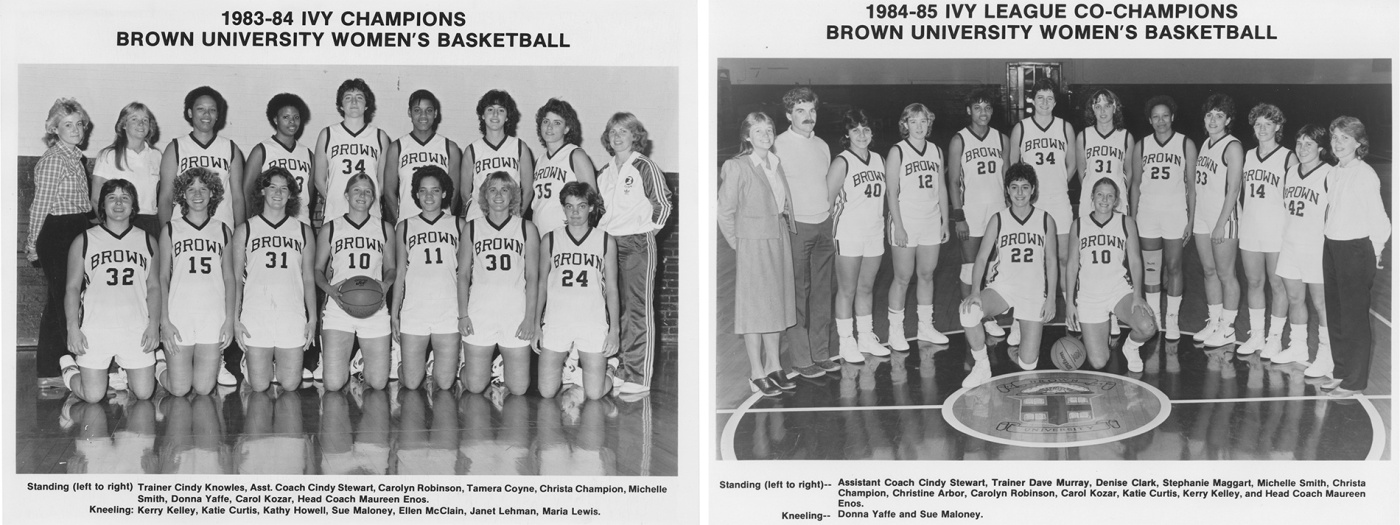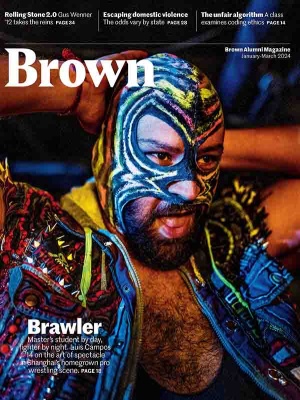Invisible Champions
Women’s basketball won Brown’s first Ivy title. But the accolades did a disappearing act.
It was sexism, pure and simple—and the BAM was among the offenders. “This year marks the twenty-fifth anniversary of the only Ivy League championship a Brown basketball team has ever won,” our 2011 story ponderously asserted, regarding the 1986 men’s team’s win. Slight problem: Not only had the women’s team won the Ivy championship in 1984, but Brown women’s basketball had amassed six (6) Ivy titles by the time the 2011 article was published.
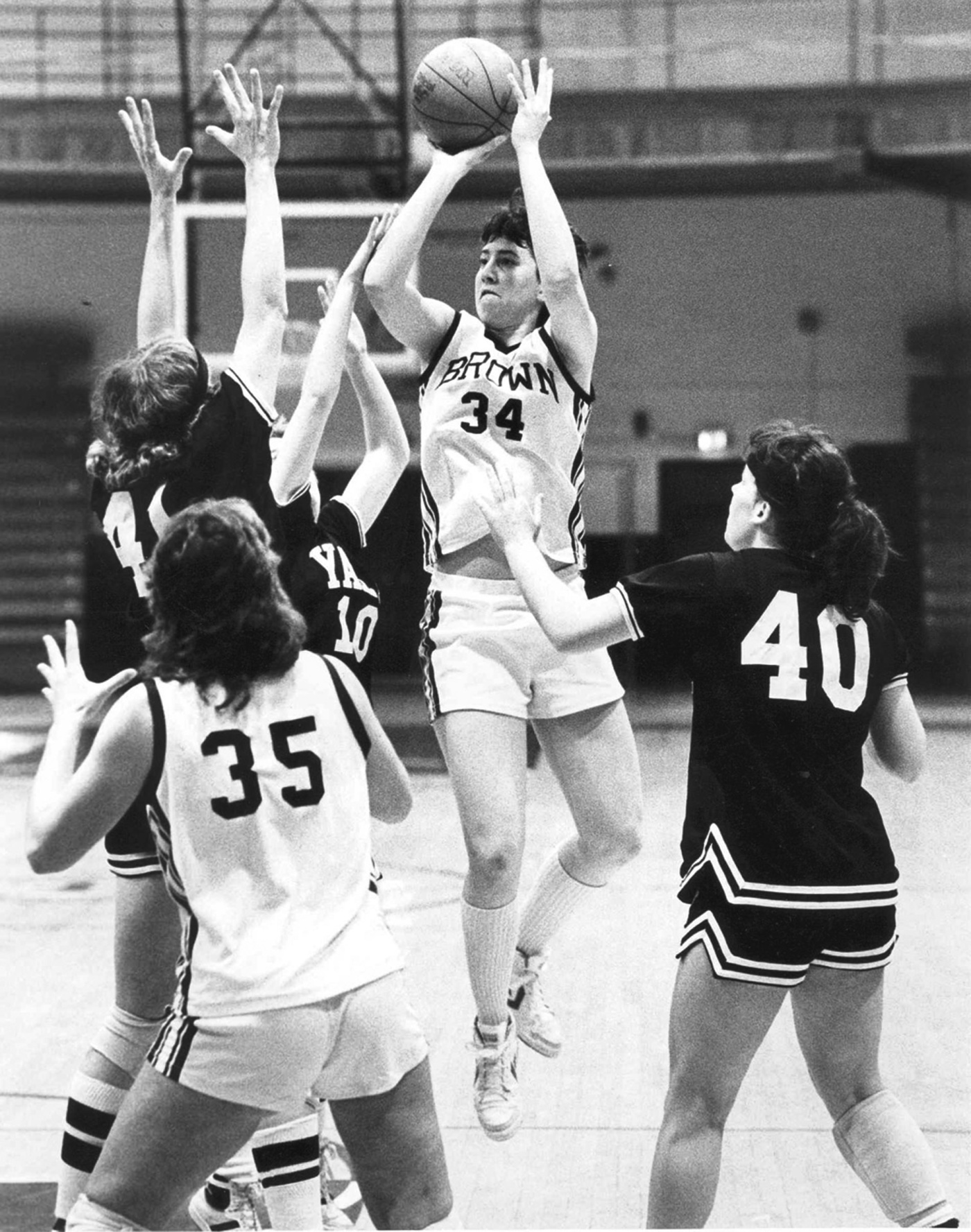
“It’s just the inherent belief that you’re talking about men unless you say otherwise,” shrugs Christa Champion ’86, who was the center and a top scorer on the 1983-84 team
that won Brown basketball’s actual first Ivy title.
The history-making team started coming together in 1980, the year Brown hired Maureen Enos, its first full-time coach for women’s basketball. It was the year that 1972’s Title IX federal anti–sex discrimination law really kicked in, thanks to new regulations and compliance enforcement.
One of Enos’s future star players, Donna Yaffe ’85—who, among other laurels, was the first Brown player inducted into the Legends of the Ivy League—was on Enos’s team at Newton North High School in Massachusetts. Yaffe had asked Coach Enos about Brown, and “I stupidly said, I don’t know, never heard of it,” Enos remembers. Then Brown came courting Enos—and once hired, Enos immediately recruited Yaffe, who became rookie of the year.
The team had previously been walk-on, so Enos had to figure out how to recruit more players. One way was to work basketball camps. Champion, who went on to play pro ball in Ireland, and Michelle D. Smith ’86, who also played pro in Sweden, both came out of Five Star Basketball camp (which trained Michael Jordan, among others), Enos says.
Champion remembers a freshman year in which the team was often overmatched, losing their point guard halfway through. Then came the fall of ’83 and “an infusion of talent,” Champion says. “Catie Curtis ’87, Carol Kozar ’87, and Maria Lewis ’87 were key subs,” she says, and importantly, they had a new point guard in Kerry Kelley ’87.
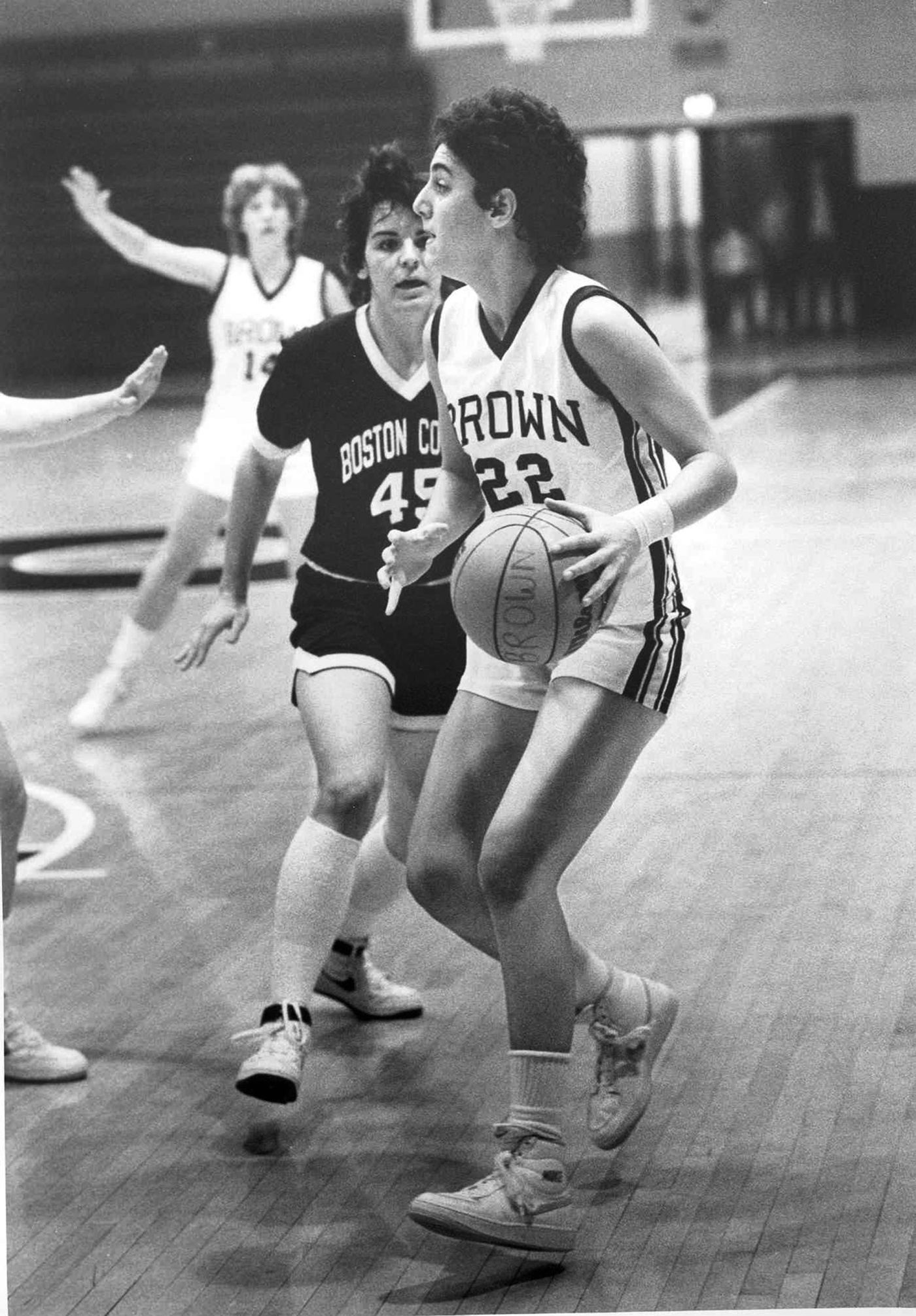
The point guard, says Champion, who has coached college basketball, “is sort of like the person driving the bus.” And Kelley was both “very unselfish” and “one of the most competitive players I’ve ever known,” Champion says.
The young team, with six freshmen and no seniors, started out slow, but then went on a nine-game winning streak. “When I look back,” Champion says, “I’m surprised at how relatively close in score our games were. We were surprised at every single
win but it felt right.”
It wasn’t just about talent, Champion says. “We totally were on a roll, but the roll we were on was this emotional team-building roll that then played out on the court.”
Smith agrees. “It was just amazing energy. [Coach Enos] created the culture and we bought into the culture and that’s why we made history,” she says. “Basketball is a team sport, and even though we had position drills, she drilled into us that if we’re going to win, we had to work together.”
“They were challenging, because they were all so bright,” the coach remembers.
“Christa, with her engineering mind, Donna, more conceptual, and Michelle, ‘Just do it!’”
A lot of the team culture was around music, Champion says. “We were always blasting tunes. Michelle Smith’s boom box was practically a member of the team.”
“Our championship years our theme song was ‘Ain’t no stopping us now,’” Smith remembers. Team members would be dancing in the aisles of the bus. “We had silly backup dancer routines to Diana Ross and the Supremes,” Champion says, and “there wasn’t a bus ride that Catie didn’t bring her guitar,” she says of Curtis, who went on to become a professional folk singer-songwriter.
All that bonding plus raw talent made for a fierce team. Take Sue Maloney ’85, says Smith. “She made it like hell for whoever she was guarding. She would run right up to them, hands going—she was a pest, bottom line.” Maloney and Kelley were both very quick with their hands and regularly got steals, Smith says, while Champion got a lot of deflects and blocks. Then there was the conditioning that Coach Enos insisted on. “We could outrun teams,” Smith says.
The starting lineup was Champion, Smith, Yaffe, Kelley, and Maloney.
“It was one of the best teams I’ve ever coached, and I’ve coached a lot,” says Enos. “A lot of the records still stand.” But it was also the team spirit that was exemplary.
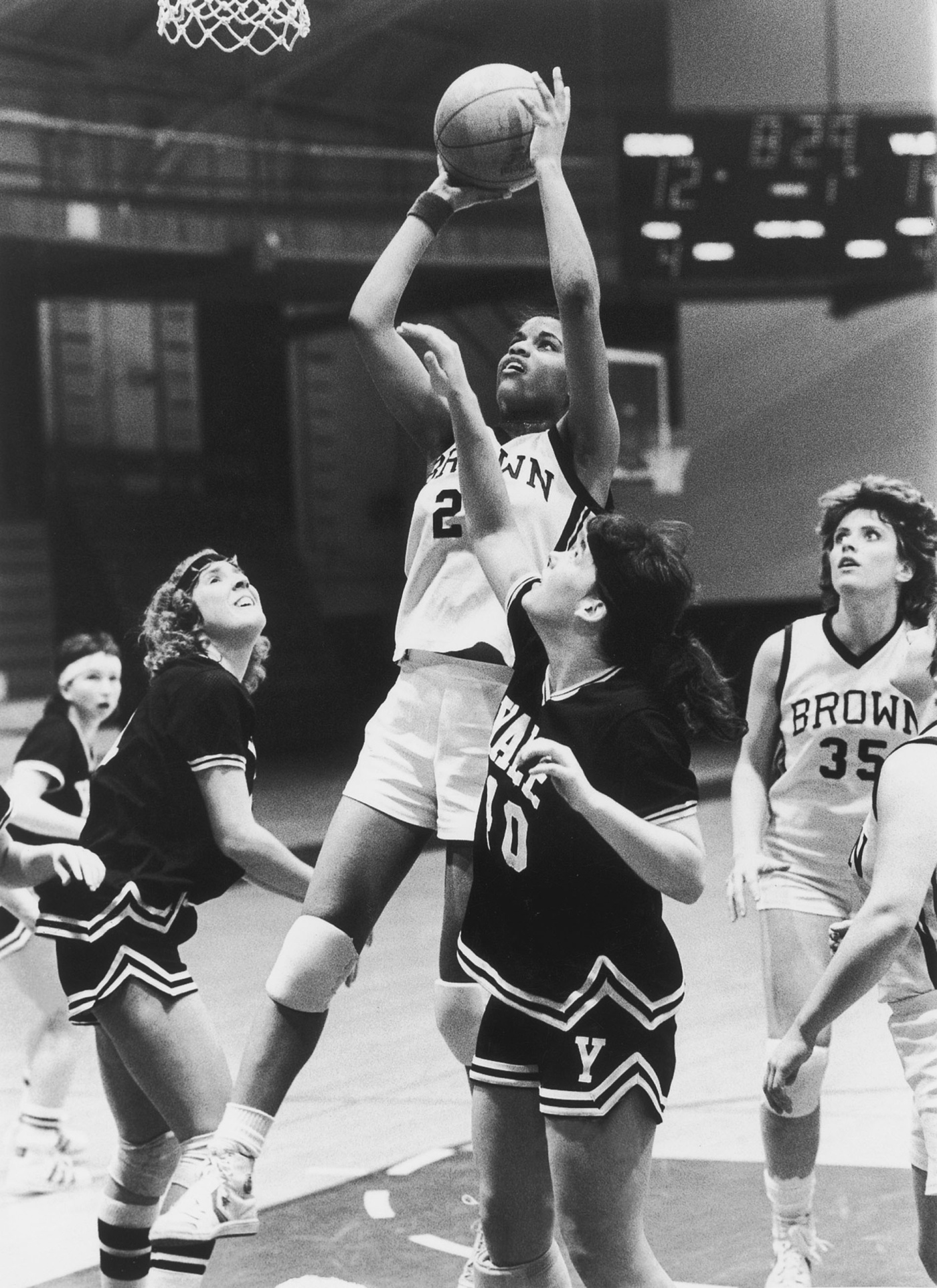
For one thing, their top shooter, Yaffe, was out with a broken wrist nearly half the season. Yaffe had averaged 20 points a game, but everyone pitched in and made up for it.
“We had this young lady Kathy Howell [’86], she was a swimmer,” Enos remembers. “We got way down in the bench because of foul trouble,” and Enos put Howell in. “The opponent kept fouling her,” Enos says, figuring she wouldn’t make the free throws. But the team supported her one hundred percent. “The look on her face, when she sank such an important shot!”
Then there was that late-season game against their top rival, Penn. “We were down 36-30 at halftime, and Kerry [who usually did assists] just put the team on her shoulders and scored 16 points in the second half.”
“That was a turning point right there,” Enos says—they’d clinched the championship, so the next night’s final game against Princeton was gravy. “We ended up putting a championship ring on our finger,” says Champion, “only it was a watch. We’d see each other and ask, ‘What time is it? It’s Ivy champs time!’”
The team won the Ivy championship in ’84-85 as well. Yaffe, as well as Champion and Smith, went on to play pro ball in Europe; all three are in the Brown Athletics Hall of Fame. But the double championship team was passed over for induction into the Brown Athletics Hall of Fame in 2004, the first year it was eligible—and as of press time has yet to be inducted. And the men’s team that won the Ivy championship for the first and only time to date? You guessed it: right into the Hall of Fame the first year it was possible.
“It’s a major miss, and I’m shaking my head,” says Smith. “You had 19 years since 2004 to correct it and it still hasn’t been corrected.” This year, as the team celebrates the 40th anniversary of its historic win, they’re hoping the recognition will finally come. Smith is optimistic, pointing out that there are now more women on the Hall of Fame committee. “To be honest, I expect it, because we’re Brown University, we’re the conscious Ivy League,” she says. “Brown always does the right thing.”
